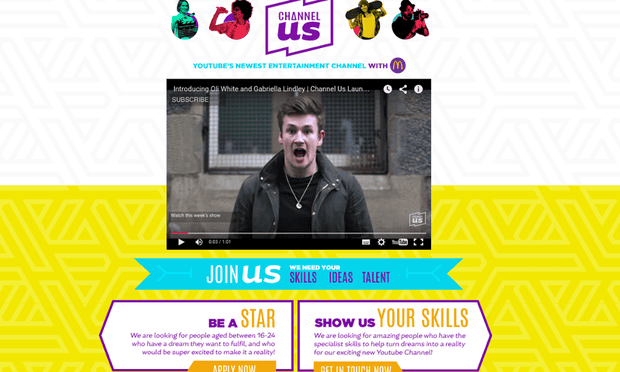Focus on the Idea, Not the Influencer
Brands need to think carefully about how they deliver an influencer campaign says Matt Donegan, Social Circle MD.
My dog gets more YouTube views than McDonald’s attracted to the nine videos posted on its doomed channel, Channel Us, over the past year. With less than 1,000 views per film, the restaurant chain finally decided to go back to flipping burgers and leave the influencer content marketing strategies to other, perhaps braver brands.
So, what went wrong? Why couldn’t McDonald’s connect with a 16-24 year old audience with a channel presented by two popular YouTube faces, Oli White and Gabriella Lindley, telling millennials how to dance, how to direct a music video and other useful ‘how to…’ content?

The answer may lie with a rival brand’s success. In March, as the influencers hired by McDonald’s were still trying to tell a generation of youngsters ‘how to’ do things they probably already knew how to do, KFC launched its 99 Gigs campaign.
KFC brought on board Callux and Charlotte de Carle, a YouTuber and an Instagrammer, to co-create a youth-focused YouTube series called KFC Presents: Around the world in 99 Gigs.
Each episode of the series was posted on YouTube every other week, and the hosts were sent in search of cool and quirky undiscovered musicians from around the world.
As part of the campaign, KFC fans could become a ‘99p VIP’ by claiming an offer on chicken via its loyalty programme, Colonel’s Club. This gave the kids a chance to win gig tickets, following any purchase from its snacking menu, as well as compete for the chance to join hosts Callux and Charlotte around the world.
Part of the Colonel’s secret ingredient for influencer success was, no doubt, engagement.
If millennials want to know how to do something, they’ll Google it - at the time they need to know how to do it. And they sure as hell weren’t going to take advice from a burger brand.
KFC, on the other hand, reached 6.2 million views with its 12-part YouTube series because it focused on entertainment and engagement.
White and Lindley - the influencer hosts used by McDonald’s – are just as popular as Callux and de Carle, but KFC had obviously put more thought into its creative, strategy and how the campaign would be delivered so that it tied-up with a loyalty scheme and restaurant promotion, which would add inspirational value to watching the videos.
Without a proper strategy, brands can end-up spending eye watering money on social influencers to front campaigns that nobody wants to watch.
The creative, therefore, is just as important as who fronts-up your campaign and more often than not, developing a longer-term partnership with an up-and-coming influencer can create a bigger social ripple than dropping all your cash on one of the big dogs for one video.

Social Circle's Matt Donegan
Recently, at Social Circle we have seen the huge positive impact of a longer campaign, using multiple different creative angles, and using social for support.
The reason why these types of campaigns work so well is because they are more of a strategic partnership, rather than a one-off promotion. Not only could the influencer’s audience learn more about the brand over a period of time, in a more authentic way, but the influencer and the brand could also get to know each other’s expectations better in order to achieve the best results.
Influencer marketing is often real-time marketing so any brand worth its salt will want to analyse, test, tweak and trial rather than just hand over a chunk of cash to an influencer and hope the results come in.
Most switched-on influencers now understand the importance of a more strategic relationship with brands, and many influencers also understand the need for a more sophisticated payment model such as Cost-Per-Engagement (CPE).
Being able to see direct engagement on a real-time basis can offer real insight to marketers. It allows them to understand how their campaigns are actually affecting their business and how much they are paying to generate these results.
This leads to confidence in implementing an influencer campaign and fairer pricing for the hire of influencers and more emphasis on strategic planning around the campaign creative.
I have no doubt that McDonald’s will return to the content space at some point in the future and employ the services of social influencers to get its content across to a difficult-to-reach audience.
If it’s heeded the lessons from the past however, it will pay more attention to the wants and needs of its audience, rely less on the appeal of the influencers themselves, and adapt their content when its clearly not engaging their target audience.








